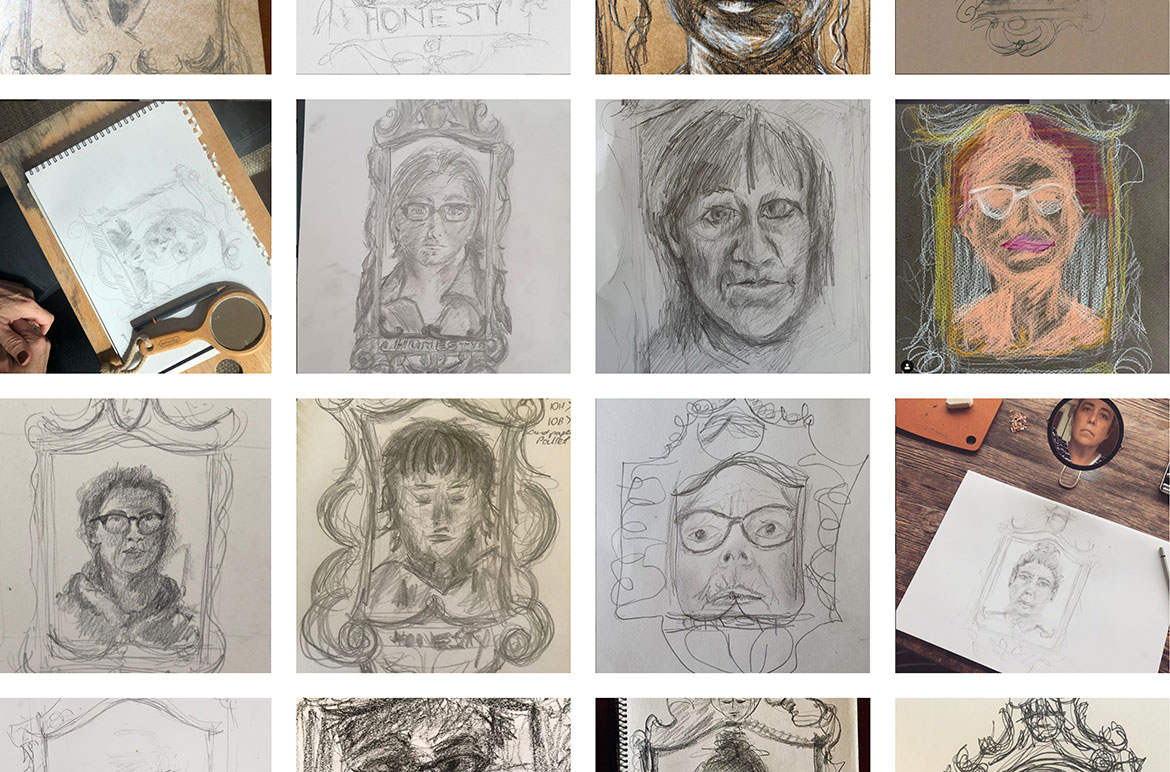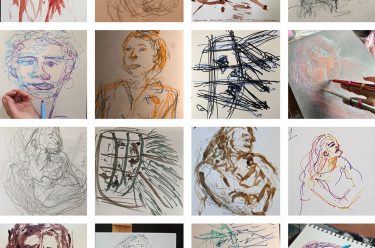What do you see when you look in the mirror? What does the mirror see? Mirrors are one of the most mysterious and fascinating tools used by artists. Catch up on this virtual workshop and consider how we use the mirror to perceive and represent ourselves through self-portraiture.
Get some handy hints on how to get the most out of a simple pencil with Dr Bill Platz’s sharpening guide, then draw along and get inspired by artworks in the QAGOMA Collection.
All you need is some paper, a pen, pencil, or crayon, and a mirror – hand held, free standing, your bathroom mirror – whatever you have available.
Watch our Mirror Likeness workshop
Our Inspiration


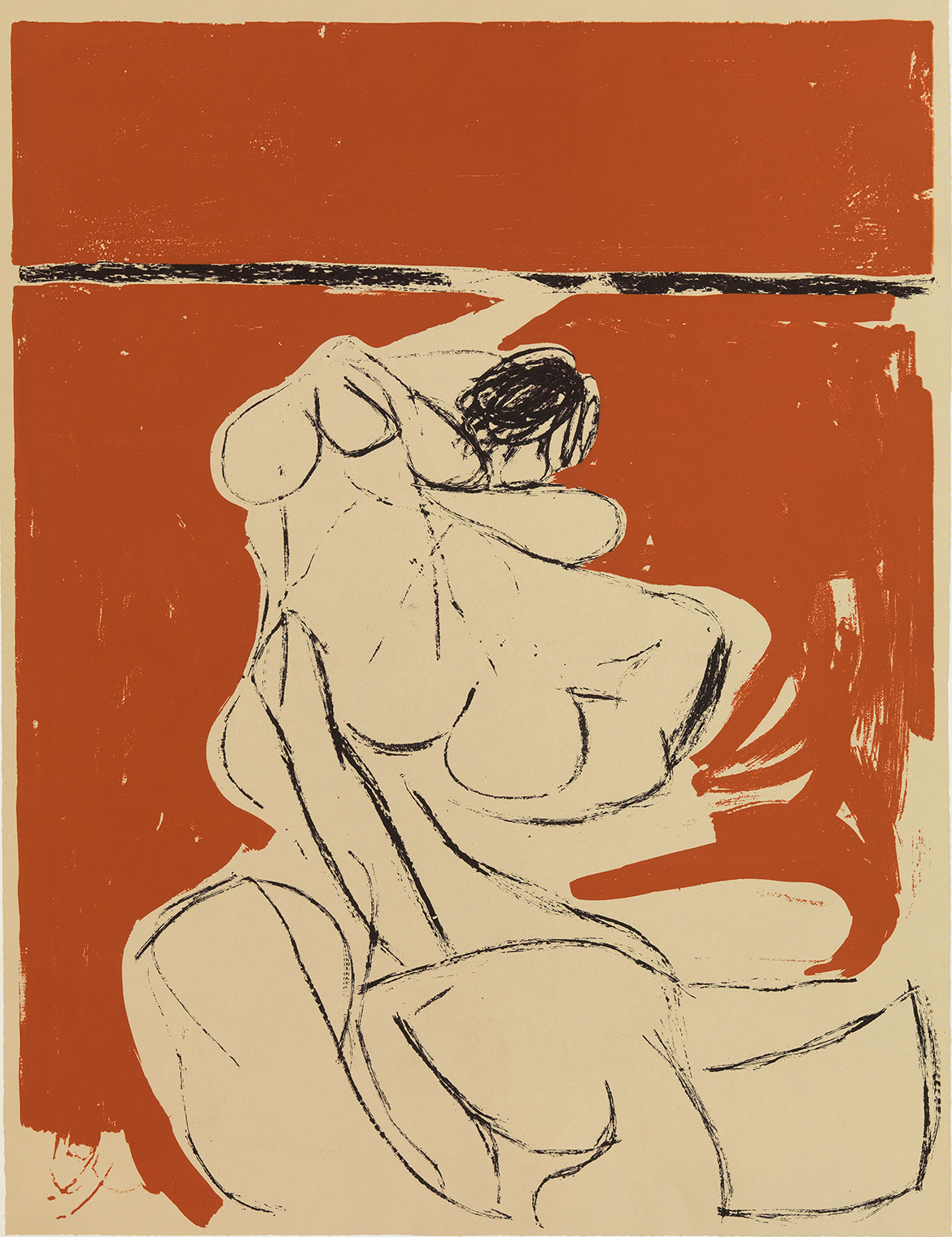
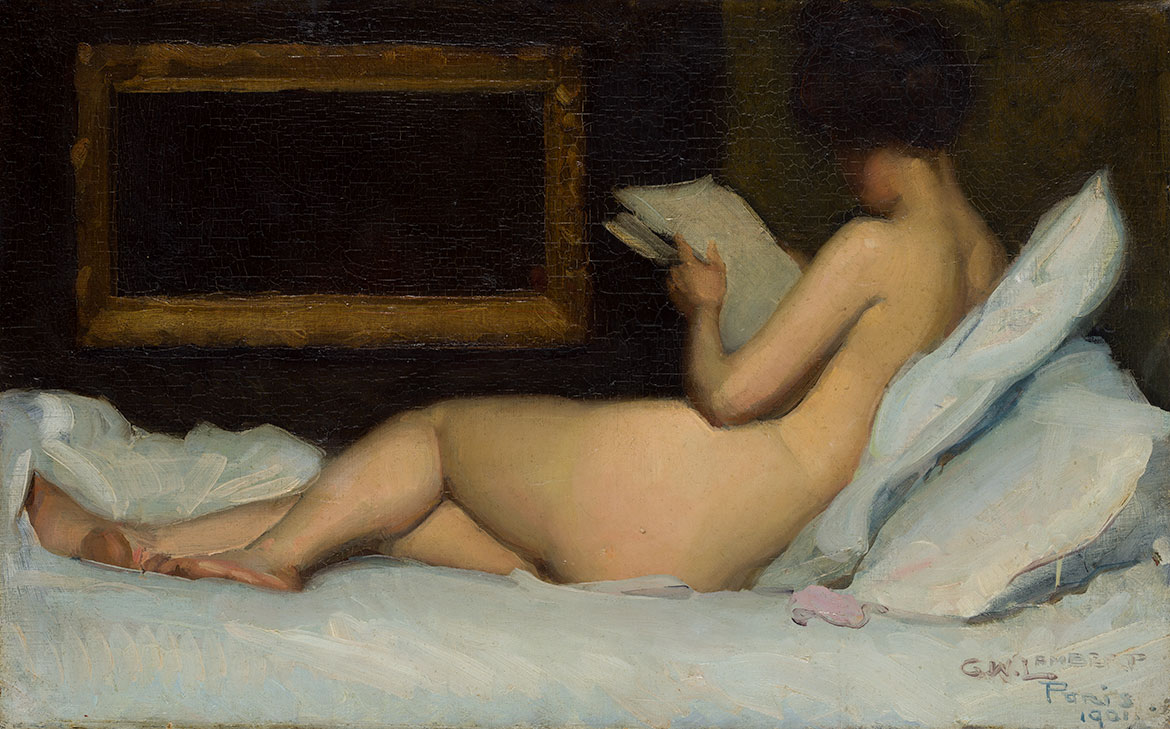
Pencil Sharpening guide
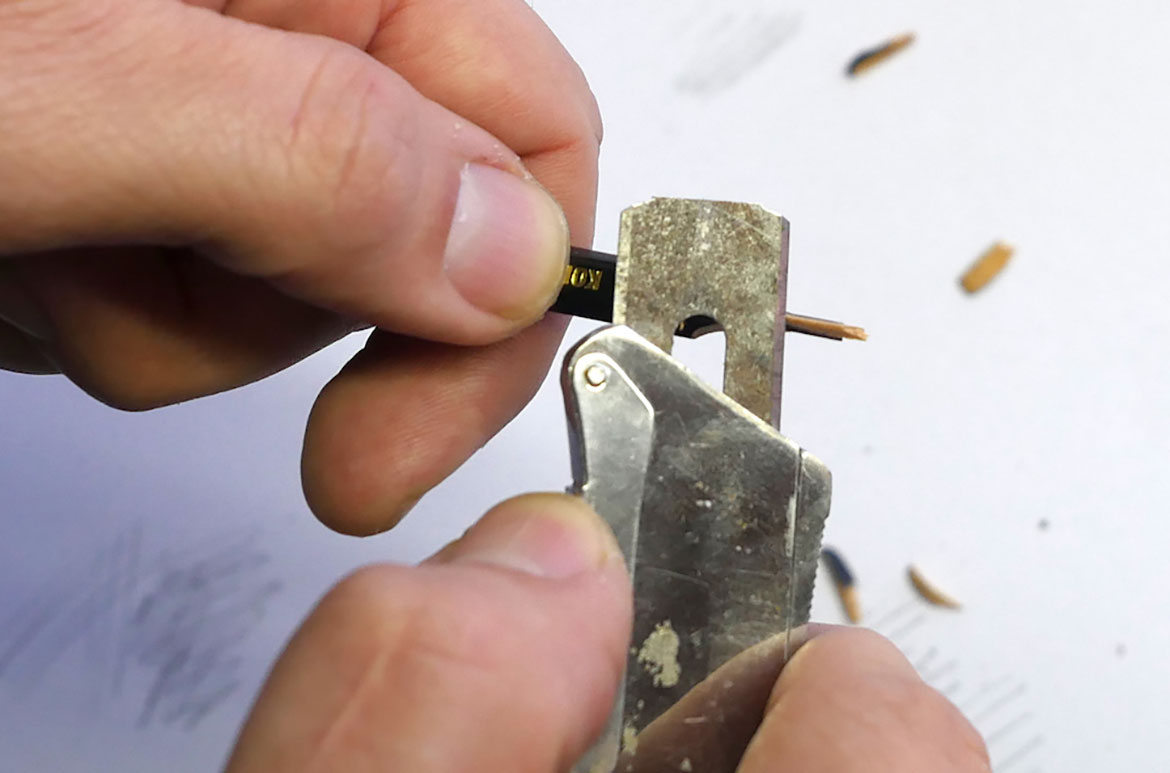

Mechanical pencil sharpeners (including the small wedge-shaped sharpeners) grind away both the wood casing and the graphite core to create the sharp cone-shaped point typically called a ‘standard point’ or ‘perfect point’.
Although a standard point can create a sharp line and a soft line (by laying it on its edge), the artist’s grip must change and the sharp point dulls very quickly.
Follow these steps to make the far more versatile and effective ‘chisel point’. The chisel point is easier on your pencils (you aren’t grinding away so much every time you sharpen), and allows you to change line quality without changing your grip on the pencil.
Please be careful when following these instructions and be mindful of your safety when using a sharp blade.
What you’ll need
Pencil
Craft knife/Stanley knife
A piece of sandpaper (or emery board)
What to do
- Press your (sharp) blade straight into the wood about 15-20mm from the tip. You will then quickly twist your wrist and chip out a piece of wood.
Of course, always cut away from yourself (and others!).
If you’ve chipped and twisted effectively the blade should lay flat against the graphite core as you exit the cutting stroke. That way, you won’t gouge into the graphite. - Again, press the blade straight down first, perpendicular to the pencil, and then execute your ‘flick’.
The key to sharpening your pencils effectively is to chip the wood casing away from the graphite core without gouging or breaking the core.
It will take a bit of practice to get the ‘flick’ of your wrist just right. Don’t be too hard on yourself if your graphite looks like raccoons have been at it the first few tries. - Continue this process until you’ve exposed 8-10mm of the graphite core as a nice smooth cylinder.
- Using a rough surface, like sandpaper or emery board, hold your pencil at about a 45-degree angle and quickly stroke back and forth a few times.
- You should now have a sharp chisel-shaped point on your pencil.
- Holding your pencil in any grip, you can simply spin the barrel of the pencil in your fingers to quickly change from a sharp fine line to a soft broad line.
You can also easily vary the weight of a single line while drawing. As you use the blunt end, you are also re-sharpening the chisel for your fine lines.
If you lose the edge, simply give it a few strokes on your sandpaper and keep drawing!
Featured image: A selection of drawings submitted by Draw Along participants
#QAGOMA
